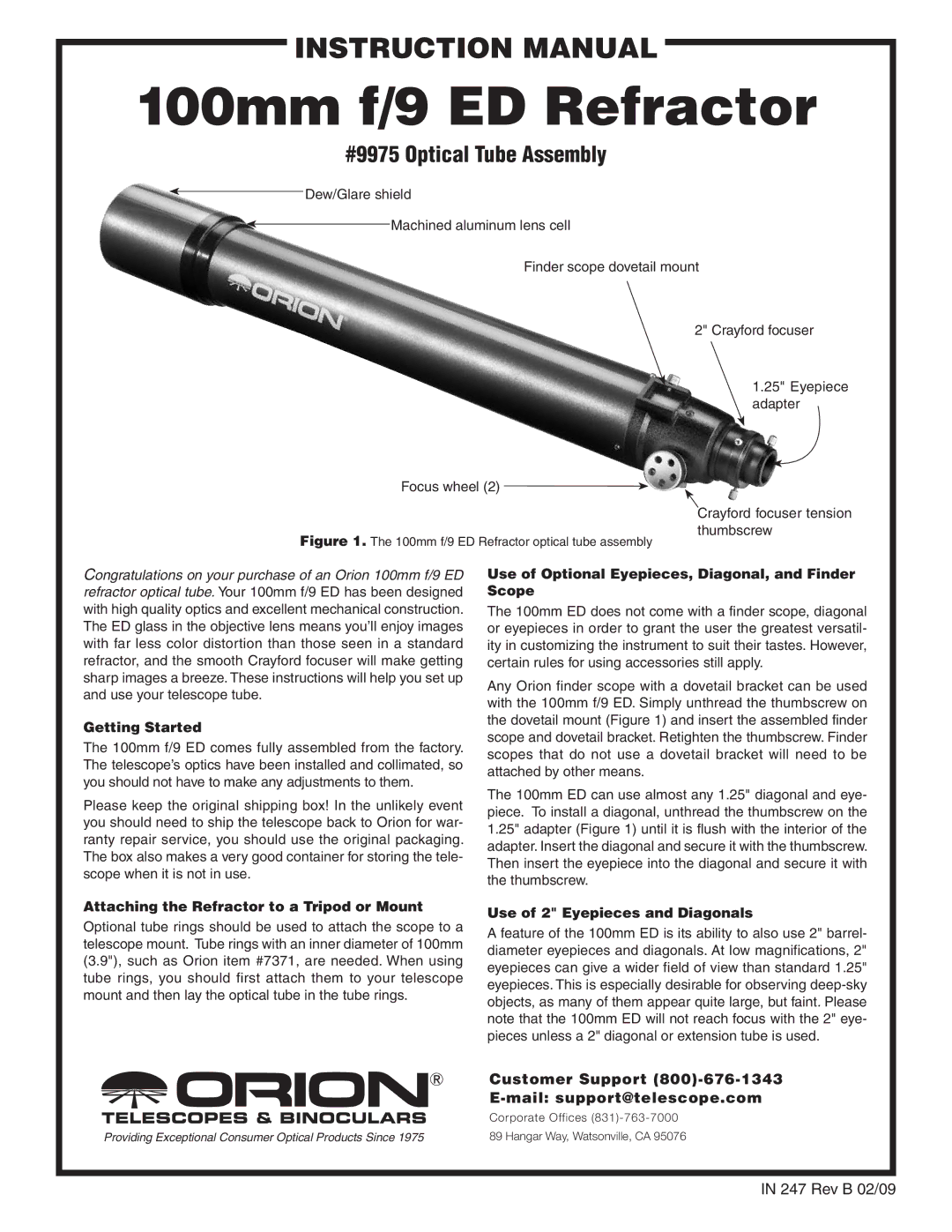9975 specifications
The Orion 9975 is an advanced satellite communication terminal designed to facilitate high-bandwidth data transmission in various environments, including governmental, military, and commercial sectors. Its versatility and reliability make it a critical asset for organizations that require secure and efficient communication solutions.One of the key features of the Orion 9975 is its capability to operate across multiple frequency bands, including Ku-band, Ka-band, and L-band. This adaptability allows users to leverage the most suitable frequency for their specific communication needs, optimizing performance and ensuring data integrity. The terminal supports a wide range of satellite systems, providing seamless connectivity in diverse operational scenarios.
The design of the Orion 9975 is built around robust technologies that enhance its operational efficiency. It incorporates advanced modulation and coding techniques that improve data throughput and mitigate the effects of interference. This ensures high-speed data transmission, even in challenging environments, making it an ideal choice for critical missions where every second counts.
Equipped with integrated network management features, the Orion 9975 enables users to monitor and control their communication networks with ease. This includes real-time diagnostics, performance monitoring, and automatic fault detection. Such capabilities not only enhance reliability but also help in minimizing downtime, allowing organizations to maintain continuous communication.
The terminal's rugged construction is another significant characteristic that sets it apart from traditional satellite communication devices. Built to withstand harsh environmental conditions, the Orion 9975 is resistant to shock, vibration, and extreme temperatures. This durability ensures that the terminal can be deployed in remote or hostile locations without compromising performance.
Furthermore, the Orion 9975 features an intuitive user interface that simplifies operation and configuration. This user-friendly design allows personnel to quickly adapt to the terminal, reducing the need for extensive training and enabling faster deployment during critical situations.
In summary, the Orion 9975 stands out in the realm of satellite communication due to its multi-band functionality, advanced technologies, reliable performance, rugged construction, and user-friendly interface. Its ability to meet the demanding needs of a variety of sectors makes it an invaluable tool for organizations that prioritize secure and efficient communication solutions.

